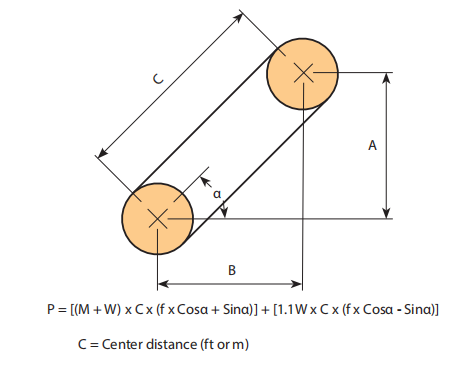Introduction
A careful assessment in the problems surrounding a conveyor is important for accurate conveyor chain selection. This segment discusses the fundamental concerns required for productive conveyor chain variety. Roller Chains are often employed for light to moderate duty material managing applications. Environmental disorders may perhaps call for the use of exclusive resources, platings coatings, lubricants or even the capacity to operate with no added external lubrication.
Essential Information and facts Required For Chain Assortment
? Type of chain conveyor (unit or bulk) such as the strategy of conveyance (attachments, buckets, by means of rods etc).
? Conveyor layout which include sprocket destinations, inclines (if any) and also the amount of chain strands (N) to get utilized.
? Amount of material (M in lbs/ft or kN/m) and style of material to get conveyed.
? Estimated bodyweight of conveyor components (W in lbs/ft or kN/m) which includes chain, slats or attachments (if any).
? Linear chain pace (S in ft/min or m/min).
? Environment through which the chain will operate like temperature, corrosion circumstance, lubrication ailment and so forth.
Phase 1: Estimate Chain Stress
Utilize the formula under to estimate the conveyor Pull (Pest) and then the chain tension (Check). Pest = (M + W) x f x SF and
Test = Pest / N
f = Coefficient of Friction
SF = Pace Aspect
Step two: Produce a Tentative Chain Selection
Employing the Test value, produce a tentative assortment by picking a chain
whose rated operating load greater than the calculated Check worth.These values are proper for conveyor service and are diff erent from these shown in tables in the front with the catalog that are related to slow pace drive chain utilization.
On top of that to suffi cient load carrying capacity frequently these chains should be of a specified pitch to accommodate a sought after attachment spacing. One example is if slats are to become bolted to an attachment every 1.five inches, the pitch of the chain selected need to divide into 1.5?¡À. Thus 1 could use a forty chain (1/2?¡À pitch) together with the attachments each 3rd, a 60 chain (3/4?¡À pitch) with all the attachments every single 2nd, a 120 chain  (1-1/2?¡À pitch) using the attachments every single pitch or perhaps a C2060H chain (1-1/2?¡À pitch) with all the attachments every pitch.
(1-1/2?¡À pitch) using the attachments every single pitch or perhaps a C2060H chain (1-1/2?¡À pitch) with all the attachments every pitch.
Stage 3: Finalize Choice – Calculate Real Conveyor Pull
Following generating a tentative choice we have to confirm it by calculating
the real chain stress (T). To do this we need to fi rst determine the real conveyor pull (P). Through the layouts shown on the suitable side of this webpage pick the proper formula and determine the total conveyor pull. Note that some conveyors can be a mixture of horizontal, inclined and vertical . . . in that case calculate the conveyor Pull at every segment and add them together.
Stage four: Calculate Maximum Chain Stress
The maximum Chain Tension (T) equals the Conveyor Pull (P) as calculated in Step three divided by the amount of strands carrying the load (N), instances the Pace Aspect (SF) proven in Table 2, the Multi-Strand Aspect (MSF) proven in Table three as well as the Temperature Aspect (TF) shown in Table 4.
T = (P / N) x MSF x SF x TF
Phase five: Check the ?¡ãRated Functioning Load?¡À of the Chosen Chain
The ?¡ãRated Working Load?¡À in the chosen chain must be higher than the Highest Chain Stress (T) calculated in Phase four over. These values are ideal for conveyor support and are diff erent from these shown in tables with the front of your catalog which are associated with slow speed drive chain utilization.
Step six: Test the ?¡ãAllowable Roller Load?¡À from the Chosen Chain
For chains that roll on the chain rollers or on top rated roller attachments it truly is needed to check out the Allowable Roller Load?¡À.
Note: the Roller load is established by:
Roller Load = Wr / Nr
Wr = The total excess weight carried from the rollers
Nr = The number of rollers supporting the bodyweight.
